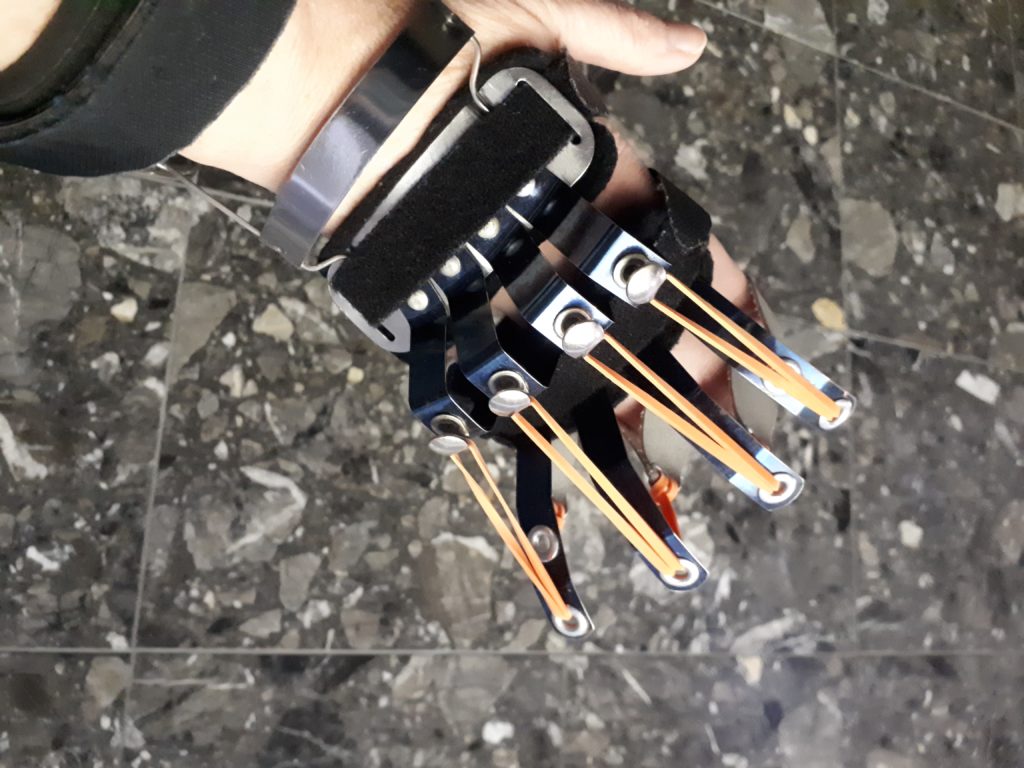Today marks the start of international Pain Awareness Month, to “raise public awareness around pain, pain management, and the great work pain professionals do during the month of September…and beyond.” (1) One of the global leaders in this area is the International Association for the Study of Pain (IASP), whose mission is to bring together:
scientists, clinicians, health-care providers, and policymakers to stimulate and support the study of pain and to translate that knowledge into improved pain relief worldwide.”
But when Lars Arendt-Nielsen, a pain researcher at Aalborg University in Denmark, was elected President of IASP, he realized that one voice was missing: the patient’s.” (2)
As a result of this realization, in 2018 the “IASP hosted the kick-off meeting of its Global Patient Alliance, which included members of patient advocacy groups from the United States, Canada, Pakistan, Poland, the United Kingdom and Finland.” (2) This was the start of a long-term initiative to “bridge the gap between pioneering pain research and patients who are living every day with chronic pain conditions.” (2)
That initial group led to the creation of the IASP’s Global Alliance of Partners for Pain Advocacy (GAPPA) of which I’m a member. (3) Why? Because I’m one of those “patients who are living every day with chronic pain conditions.” (2)
My pain condition is a rare disease, so not only do I raise awareness of chronic pain in general, I also try to increase awareness of CRPS – particularly among healthcare professionals – because: “The prognosis of CRPS is quite good if treatment is started early… without adequate therapy, CRPS can spread to other limbs and worsen in terms of symptoms and chance of recovery.” (4)

Unfortunately, although patients who develop CRPS often know immediately that something is seriously wrong, it often takes precious time to convince healthcare professionals of this; nurses, physicians, physiotherapists, and others who treat patients often don’t understand the level of excruciating burning pain that is the hallmark of CRPS onset – or they simply refuse to believe the patient’s description of the intensity of their pain:
The most common and prominent symptom of CRPS is the pain that affected individuals will feel.
The pain is often deep inside the limbs with a burning, stinging, or tearing sensation.
Sensory changes are also common, and may include increased sensitivity to painful stimuli, feeling pain from stimuli that are usually non-painful, and in some instances, sensory loss (e.g., numbness).” (5)
At this point, I’d like to explain what that acronym stands for. CRPS is Complex Regional Pain Syndrome, which used to be called Reflex Sympathetic Dystrophy or RSD. Think about that for a second; with all the fancy names for diseases that exist, this one is basically just being called ‘Complex’. My background is in healthcare, in bioethics or medical ethics, so I use my own experience with healthcare professionals as part of my awareness raising – which is important with such a ‘complex’ condition!
The United States Government, through the National Institute of Neurological Disorders and Stroke (NINDS) under the National Institutes of Health (NIH), has published a Complex Regional Pain Syndrome Fact Sheet which begins its description of CRPS in this way:
excess and prolonged pain and inflammation that follows an injury to an arm or leg.
CRPS has acute (recent, short-term) and chronic (lasting greater than six months) forms.
CRPS used to be known as reflex sympathetic dystrophy (RSD) and causalgia.
People with CRPS have changing combinations of spontaneous pain or excess pain that is much greater than normal following something as mild as a touch.
Other symptoms include changes in skin color, temperature, and/or swelling on the arm or leg below the site of injury.
Although CRPS improves over time, eventually going away in most people, the rare severe or prolonged cases are profoundly disabling.
Most CRPS illnesses are caused by improper function of the peripheral C-fiber nerve fibers that carry pain messages to the brain.
Their excess firing also triggers inflammation designed to promote healing and rest after injury.
In some people the nerve injury is obvious but in others a specialist may be needed to locate and treat the injury.” (6)
As for the IASP, they describe CRPS as:
an uncommon condition… challenging for clinicians to gain experience and knowledge of the condition to provide adequate diagnostic assessment and intervention.
These difficulties appear to apply worldwide.
CRPS is also a complex condition, and the pathophysiology points to potentially multiple disease mechanisms, further compounding management.” (7)
This year, as always, I’ll be raising awareness of CRPS during Pain Awareness Month. I’ll also be calling attention to chronic pain in general, of course, which ties in well to the IASP’s goal for 2022. That IASP goal is to “focus on the vital importance of an individualized, multidisciplinary, and multimodal approach to pain care.” (1) CRPS is one of the pain conditions for which that multidisciplinary approach is most important:
In a multimechanism syndrome, a multidisciplinary approach including pharmacotherapy, physiotherapy, psychological intervention and invasive treatments is needed.
However, in clinical CRPS trials, patients usually receive a single therapy only.
Because CRPS is a multimechanism syndrome and targeting only a single mechanism might not be sufficient, it is extremely difficult to achieve positive results in trials that study monotherapies.” (8)
Stay tuned throughout this month, for more on chronic pain in general and some specific information about CRPS. And on how I manage my own pain, along with the medical treatments that I receive; from art to exercise, anti-inflammatory foods to mindful meditation, and much more!
If you have any comments or questions, feel free to reach out over on Instagram or Twitter. I’ve had to disable the Comments feature here on the blog, because it was too much for me to manage with my CRPS-related ‘mild cognitive impairment’. I do love to hear from you, though!
As always, thanks so much for stopping by, and remember to take some time for yourself. You’re worth it, and you deserve to treat yourself with compassion and kindness. Stay safe, and keep well.
References
(1) International Association for the Study of Pain (IASP). Pain Awareness Month. IASP Web page. Undated (2022). Accessed 01 Sep 2022:
https://www.iasp-pain.org/advocacy/pain-awareness-month/
(2) Sukel, Kayt. Building a Global Patient Alliance. IASP Web page. International Association for the Study of Pain (IASP). 06 Jul 2022. Accessed 01 Sep 2022:
https://www.iasp-pain.org/publications/relief-news/article/building-a-global-patient-alliance/
(3) International Association for the Study of Pain (IASP). GAPPA Launches the My Letter to Pain Initiative. IASP Web page. 08 Jun 2022. Accessed 01 Sep 2022:
(4) Kabani R, Brassard A. Dermatological Findings in Early Detection of Complex Regional Pain Syndrome. JAMA Dermatol. 2014;150(6):640–642. doi:10.1001/jamadermatol.2013.7459. Accessed 01 Sep 2022:
https://jamanetwork.com/journals/jamadermatology/fullarticle/1861486
(5) National Organization for Rare Disorders (NORD). Complex Regional Pain Syndrome. Rare Disease Database (online). Updated 2019. Accessed 01 Sep 2022:
https://rarediseases.org/rare-diseases/reflex-sympathetic-dystrophy-syndrome/
(6) National Institute of Neurological Disorders and Stroke (NINDS). Complex Regional Pain Syndrome Fact Sheet. National Institutes of Health (NIH). NIH Publication No. 20-NS-4173. Sep 2020. Accessed 01 Sep 2022:
https://www.ninds.nih.gov/complex-regional-pain-syndrome-fact-sheet
(7) International Association for the Study of Pain (IASP). CRPS From Bedside To Bench. IASP 2022 World Congress on Pain. Webpage. Undated (2022). Accessed 01 Sep 2022:
https://iaspworldcongress2022.org/sessions/crps-from-bedside-to-bench/
(8) Mangnus, T.J.P., Bharwani, K.D., Dirckx, M. et al. From a Symptom-Based to a Mechanism-Based Pharmacotherapeutic Treatment in Complex Regional Pain Syndrome. Drugs. 82, 511–531 (2022). 05 Mar 2022. Accessed 01 Sep 2022:
https://doi.org/10.1007/s40265-022-01685-4

